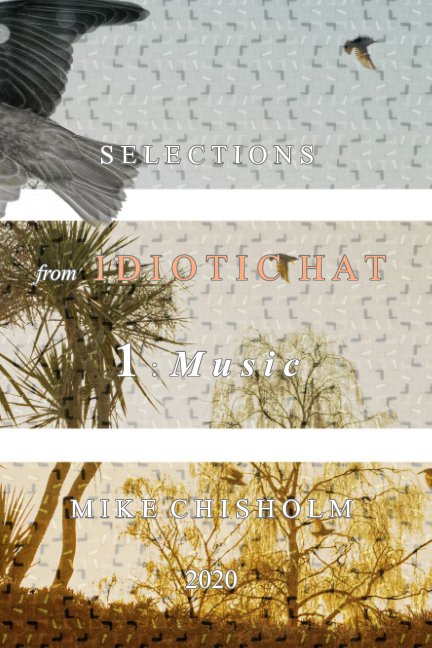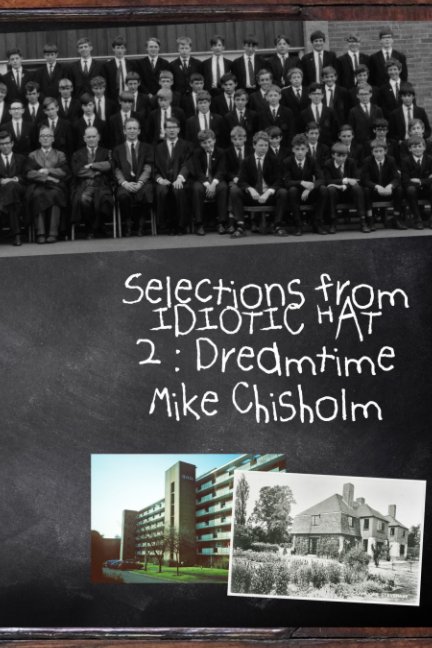Then it occurred to me that, like so many would-be profundities, it might also be seen as a statement of the bleedin' obvious: that a new idea – or the poetic framing of a space where a new idea seems to be lurking – belongs to the future. Well, no shit, Socrates; where else? In fact, I'd suggest it is the fate of most of today's profundities to become tomorrow's platitudes. The only exceptions are genuinely difficult ideas – I can't see String Theory ever being taught at primary school – and authentic art, what Ezra Pound called "news that stays news". Plus the sort of eternal truths that need to be rediscovered and restated for every new generation, because people never learn, do they?
It put me in mind of two rather well-worn nuggets from the Big Book of Inspirational Quotes. The first is Keats' famous idea of "negative capability", as expressed in a letter to his brother:
Brown and Dilke walked with me and back from the Christmas pantomime. I had not a dispute but a disquisition, with Dilke on various subjects; several things dove-tailed in my mind, and at once it struck me what quality went to form a Man of Achievement, especially in Literature, and which Shakespeare possessed so enormously — I mean Negative Capability, that is, when a man is capable of being in uncertainties, mysteries, doubts, without any irritable reaching after fact and reason — Coleridge, for instance, would let go by a fine isolated verisimilitude caught from the Penetralium of mystery, from being incapable of remaining content with half-knowledge. This pursued through volumes would perhaps take us no further than this, that with a great poet the sense of Beauty overcomes every other consideration, or rather obliterates all consideration.Sunday 21 Dec. 1817
There are two quite incidental things that I love about that letter. Primarily, of course, there is the bizarre but wonderful idea of John Keats at a Christmas pantomime ("He's behind you!" [1]) which is not the bit of the letter usually polished up for the mental mantelpiece. And then there is the fact that one of the great and abiding ideas of literary criticism came to one of the great and abiding English poets in one of those intense, happy post-gig chats, walking home through the late-night streets, or waiting for the bus. We've all been there, I think, albeit usually minus the great and abiding idea.
The second bit of literary pokerwork is from Rainer Maria Rilke's Letters to a Young Poet:
You are so young, all still lies ahead of you, and I should like to ask you, as best I can, dear Sir, to be patient towards all that is unresolved in your heart and to try to love the questions themselves like locked rooms, like books written in a foreign tongue. Do not now strive to uncover answers: they cannot be given you because you have not been able to live them. And what matters is to live everything. Live the questions for now. Perhaps then you will gradually, without noticing it, live your way into the answer, one distant day in the future.16 July 1903 (translation by Charlie Louth)
"Live the questions for now..." Isn't that great? Definitely news that has stayed news. Rilke's ten letters to Franz Xaver Kappus are worth reading, if you don't know them: the Penguin edition quoted is less than 100 pages in length, but packed with quotable wisdom (he's surprisingly interesting on sex, for example). Indeed, it seems these letters are far more widely read than Rilke's actual poetry, which is notoriously difficult, and the very embodiment of that Adornoid idea of "seeking those thoughts that are not yet in the world because they lie in the future of thinking, as coming moments of poetic truth". Which is both humbling and hilarious: in 1903 Rilke was just 27 years old, had not yet published any of the work for which we remember him now, and the "young poet" Kappus was 20. Ah, the wisdom that comes with age! But then Keats was a mere 22 at the time of the "negative capability" letter. Twenty-two! It's just not fair, is it?
Which reminds me of yet another quote, one which is probably less famous in the Anglophone world:
Dreiundzwanzig Jahre, und nichts für die Unsterblichkeit getan!Friedrich Schiller, Don Carlos, 1787
That is, "Twenty-three, and I ain't done nuffink!", or something like that [2]. Well, I'm sixty-six now, and have been trying to live the questions, done my best to be in uncertainties, mysteries, and doubts, and have patiently waited for those coming moments of poetic truth since I was twenty-something myself. Now, I have achieved some things over the years, if nowhere near as many or of the quality I'd hoped or intended, and have certainly had my share of moments and, yes, even found some answers, but the prospect of any immortality is still impossibly far out of reach. But that is hardly the point. Although I've always been a Coleridge fan, and don't mind a little reaching after a reassuring bit of fact and reason myself, I think it's true to say that – as on a very long car journey – the most irritating, irritable question ever heard coming from the back seat is: are we there yet?
So, listen, next generation back there, here is an eternal truth: we may never get there, I don't even know where "there" is, and I'm not even sure we'll know it if and when we do, so settle down and enjoy the ride, and I can promise that there'll definitely be some wonderful things along the way... Meanwhile, there are some biscuits in that bag on the floor. And don't eat them all.
1. The tradition of the British Christmas pantomime is, by common consent, a unique and splendid cultural treasure ("Oh, no it isn't!" "Oh, yes it is!"). Those of you unfortunate enough not to have drawn a winning ticket in the Lottery of Life can read about it here.
2. Literally, "Twenty-three, and done nothing for [my] immortality!"





























